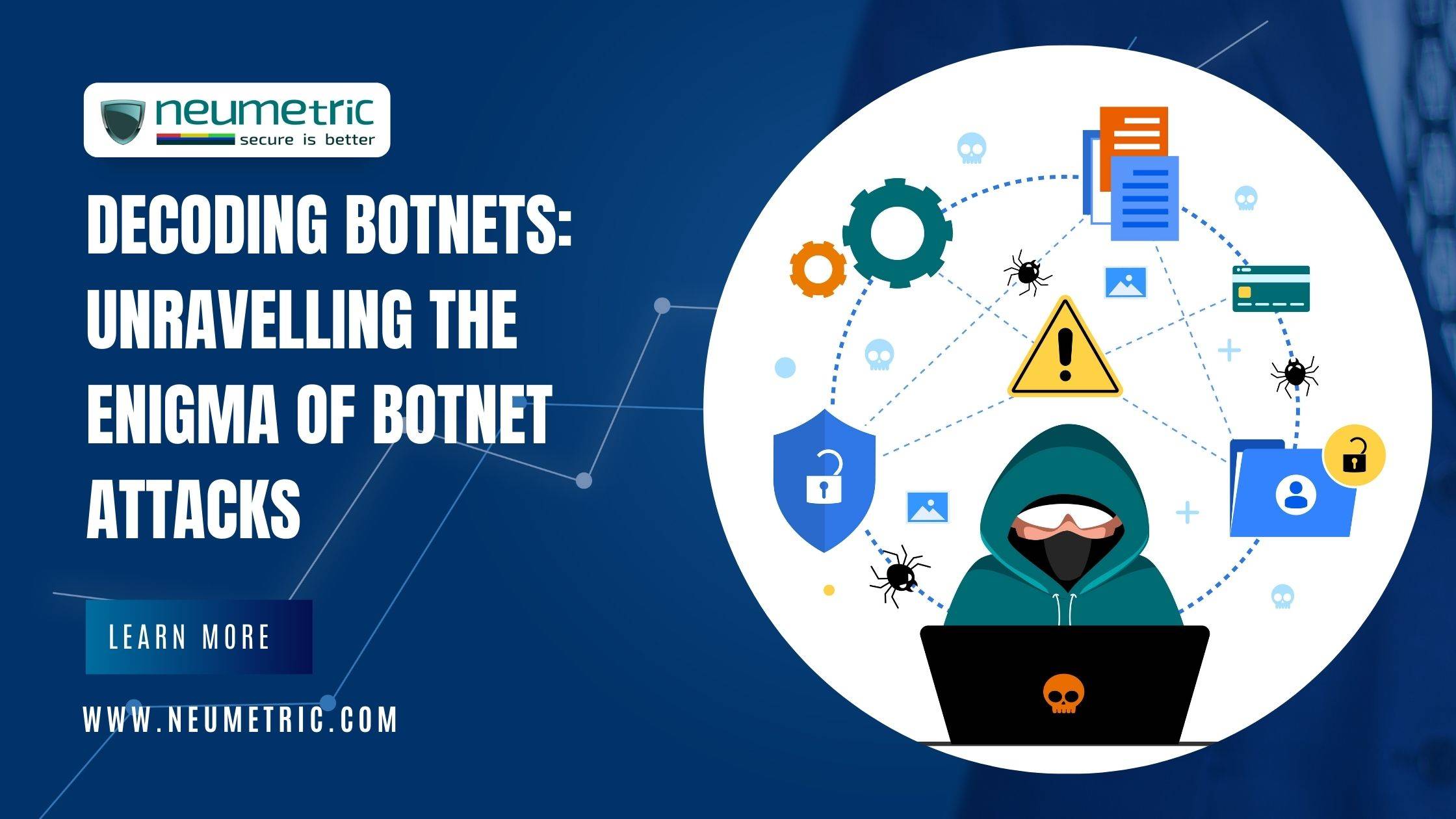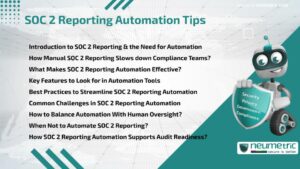Table of Contents
ToggleIntroduction
In an age where data and digital presence form the backbone of our lives, cybersecurity is not just a buzzword but a fundamental pillar of digital survival. Amid various cyber threats, botnets have surfaced as an intricate challenge. This silent yet potent threat is often underestimated, underscoring the critical need to unravel the enigma of “what is a botnet”.
Understanding the basics
A botnet, a portmanteau of ‘robot’ and ‘network’, is a network of private computers infected with malicious software and controlled as a group without the owners’ knowledge. They echo the sinister yet sophisticated capacity of cybercriminals. Dwelling in the shadows of the internet, botnets are intricate networks of bots (compromised computers) governed by command and control servers [C&C].
Historically, botnets were elementary, yet their evolution has transcended into complex, multi-faceted ecosystems capable of extensive damage. From the subversion of thousands of computers by early forms of worms and viruses, botnets have evolved into highly sophisticated networks. Their history is a narration of the evolution of cyber threats and their escalating menace.
How do botnets operate?
Bots are usually personal or organisational computers, enslaved after infection. These unassuming minions, often in thousands to millions, form the foot soldiers of a botnet. The puppeteer of the bots, C&C servers, remotely directs bots, exploiting them for malicious activities ranging from DDoS attacks, spamming to data theft.
Types of malicious activities:
- DDoS attacks: Botnets can inundate a target website with traffic, leading to service denial to legitimate users.
- Spamming: They’re renowned for disseminating billions of spam emails, breeding ground for phishing and malware distribution.
- Data theft: Stealthily, they infiltrate and exfiltrate sensitive data, holding organisations at ransom.
Lifecycle of a botnet:
- Recruitment: Botnets are formed by infiltrating computers via malware, growing their army.
- Commanding: C&C servers assume control, turning bots into puppets.
- Exploitation: Bots are then exploited for various malicious endeavours.
The methods of infection
- Malware distribution: Proliferating via malicious software embedded in seemingly innocuous files or links.
- Phishing: Exploiting human naivety, masquerading as trustworthy entities to steal sensitive data.
- Social engineering: Manipulating individuals into divulging confidential information.
The risks and consequences
- Data breach and privacy invasion: Botnet attacks often result in massive data breaches. For individuals, this can lead to a formidable invasion of privacy. Personal information, sensitive data, financial details – all laid bare and exploited. For organisations, data breaches signify not just financial losses but also a stark erosion of client trust and reputation.
- Financial losses: Botnets, especially through methods like ransomware, can lock access to critical data and demand ransom. Individuals and companies alike face significant financial losses, either through extortion or the consequential downtime.
- Resource drain: Botnets harness the processing power of infected devices. This unauthorised utilisation slows down the systems, increases maintenance requirements & can lead to premature hardware failure.
- Reputational damage: For organisations, a botnet attack is a scar on their public image. The revelation that client or user data has been compromised can result in a loss of trust, leading to customer attrition and a decline in business.
Consequences
Impact on individuals:
- Identity theft: Personal information accessed during a botnet attack can lead to identity theft. Individuals find their financial details, social security numbers & other sensitive data misused.
- Financial ruin: Unauthorised access to banking and credit card details can result in fraudulent transactions and financial losses.
- Psychological trauma: The invasion of personal privacy and the constant fear of being watched or tracked lead to psychological stress and anxiety.
Impact on organisations:
- Operational downtime: Botnet attacks can cripple systems, leading to operational downtime. Every moment of inactivity translates to lost revenue.
- Legal repercussions: Data breaches often lead to legal actions. Organisations face lawsuits, fines & penalties for failing to protect customer data.
- Brand erosion: Recovering from the reputational damage post-botnet attack is an uphill battle. It takes time, resources & strategic efforts to rebuild lost customer confidence.
Economic and social implications:
- Economic impact: On a macro scale, rampant botnet attacks can destabilise economies. They burden affected entities with recovery costs and legal fees, influencing economic health.
- Social engineering threats: Post-attack, there’s a spike in social engineering threats. Individuals and organisations become susceptible to phishing and other deceptive practices.
- National security risks: On a grander scale, botnets can target critical national infrastructure, posing significant security risks.
Detection and prevention
Detecting botnet activity early can drastically reduce the potential damage. Here’s a detailed look at how organisations and individuals can identify these threats.
Network traffic analysis:
- Signs of botnet activity: Unusual spikes in traffic, especially during off-peak hours, can be a telltale sign of botnet infiltration.
- Tools and techniques: Utilising network traffic analysis tools that can monitor, analyse & report unusual patterns of data flow.
- Machine learning algorithms: Implementing ML algorithms that can learn and adapt to normal network behaviour, making anomaly detection more accurate and efficient.
Endpoint security measures:
- Behaviour analysis: Monitoring the behaviour of individual devices to identify abnormal activities that could indicate a malware infection.
- Antivirus software: Regularly updating and running antivirus software to detect and eliminate malicious programs.
Domain Generation Algorithms [DGAs]:
- Tracking communication: Botnets often communicate with C&C servers via domains generated by DGAs.
- Identifying malicious domains: Utilise threat intelligence and machine learning to identify and blacklist these dynamically generated domains.
Prevention
Prevention, often seen as the first line of defence, underscores the adage that prevention is better than cure.
Security software:
- Comprehensive protection: Employing a suite of security software including antivirus, anti-malware & firewall for real-time protection.
- Regular updates: Keeping the security software updated to identify and counter new threats.
User education and awareness:
- Training programs: Implementing regular training programs for employees and users to educate them on the latest cybersecurity threats and safe practices.
- Phishing awareness: Educating users on identifying and avoiding phishing attempts which are a common method for malware distribution.
Network security protocols:
- Firewalls and Intrusion Detection Systems [IDS]: Strengthening network defences with robust firewalls and IDS to monitor and block suspicious activities.
- Segmentation: Dividing the network into segments to contain the spread of botnet infections within the network.
Regular backups:
- Data safety: Ensuring that critical data is backed up regularly to prevent data loss during botnet attacks.
- Cloud and physical storage: Utilising a combination of cloud and physical storage options for redundancy.
Staying safe online
- Good cyber hygiene: Involves regular updates, cautious online behaviour & informed digital practices.
- Keep software updated: Updates act as fortresses, barricading against vulnerabilities.
- Using strong, unique passwords: Each password is a sentinel, the stronger and unique, the better the defence.
- Regularly backing up data: Backup is the unsung hero, a sanctuary during data loss.
The evolutionary leap
AI and machine learning, the gems of modern technological innovation, are set to be instrumental in the future evolution of botnets. The integration of AI could engender botnets with cognitive abilities, enabling them to make decisions, adapt to defensive measures & evolve autonomously to become even more resilient and potent.
Future botnets might embrace decentralisation akin to blockchain technology, minimising their vulnerability to takedowns. This structural transformation would embolden their resilience, making traditional mitigation approaches like targeting command and control centres less effective.
With the augmentation of AI, future botnets could be endowed with sophisticated evasion tactics. These could include mimicking human behaviour, dynamically altering their communication patterns & employing advanced encryption to cloak their activities, making detection and mitigation a complex challenge.
Emerging threat landscape
The burgeoning IoT ecosystem, with billions of interconnected devices, presents a fertile ground for the propagation of botnets. The future might witness botnets exploiting vulnerabilities in poorly secured IoT devices, amplifying the scale and impact of attacks.
Imagine botnets that can strategize attacks autonomously, identify targets & optimise their attack patterns in real-time. These self-directed entities could execute multi-vector attacks, escalating the complexity of defence.
The sinister alliance of botnets and ransomware could burgeon, with botnets being employed to proliferate ransomware on a grand scale. This meld could signify an era where data hostage crises are rampant, amplifying the urgency for robust cybersecurity protocols.
The defence paradigm shift
The future defence against botnets will transcend static measures. We will witness the emergence of adaptive defence mechanisms ingrained with AI and machine learning, capable of learning, evolving & responding to botnet tactics in real-time. The global nature of the botnet threat will catalyse unprecedented international collaboration. Countries and organisations will unite, sharing intelligence and resources to combat the borderless menace of botnets.
An enlightened digital populace, aware of the lurking threats and practising enhanced digital hygiene, could emerge as one of the strongest bulwarks against botnets. Education and awareness campaigns will become integral elements of national and organisational cybersecurity strategies.
Conclusion
As we pull the curtains, understanding “what is a botnet” isn’t just for the tech-savvy but a necessity for all netizens. The collective stride towards informed, vigilant & secure cyber practices is not just essential but existential. The virtual world, teeming with opportunities, is also a lair of lurking threats like botnets. Armed with knowledge, updated defences & vigilance, every individual contributes to the impervious bulwark against this invisible yet potent menace. The quest for cybersecurity is not a battle but a war, a relentless pursuit ensuring that in the echoing corridors of the internet, security & privacy reign supreme.





